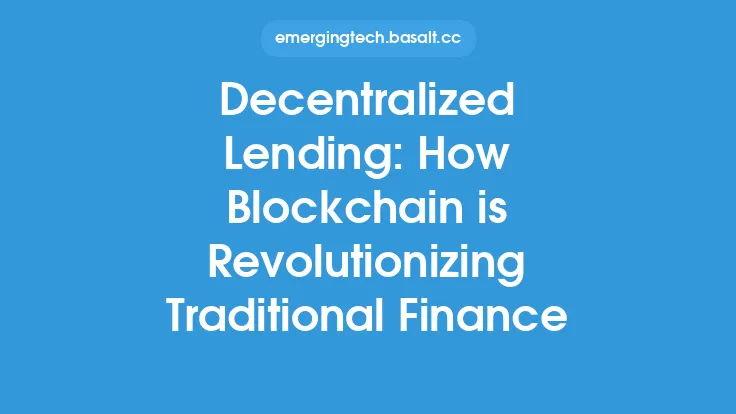The insurance industry has traditionally been slow to adapt to new technologies, but the emergence of insurtech has changed the landscape. Insurtech, a combination of insurance and technology, refers to the use of technology to improve the efficiency, speed, and personalization of insurance services. This revolution is transforming the way insurance companies operate, from underwriting and claims processing to customer engagement and risk management.
Introduction to Insurtech
Insurtech is not just about digitizing existing processes, but about creating new business models, products, and services that leverage technology to provide better outcomes for customers. Insurtech companies are using advanced technologies such as artificial intelligence, machine learning, and data analytics to analyze vast amounts of data, identify patterns, and make predictions. This enables them to offer more accurate risk assessments, personalized policies, and faster claims processing. Insurtech is also enabling new distribution channels, such as online platforms and mobile apps, which are making insurance more accessible and convenient for customers.
Key Technologies Driving Insurtech
Several key technologies are driving the insurtech revolution. These include:
- Application Programming Interfaces (APIs): APIs enable different systems to communicate with each other, allowing insurtech companies to integrate with existing infrastructure and create new services.
- Cloud Computing: Cloud computing provides scalability, flexibility, and cost savings, enabling insurtech companies to quickly deploy new applications and services.
- Data Analytics: Data analytics enables insurtech companies to analyze large amounts of data, identify patterns, and make predictions.
- Internet of Things (IoT): IoT devices, such as sensors and wearables, provide real-time data that can be used to assess risk and prevent losses.
- Machine Learning: Machine learning enables insurtech companies to build models that can predict outcomes, such as the likelihood of a claim.
Business Models in Insurtech
Insurtech companies are experimenting with new business models that leverage technology to provide better outcomes for customers. These include:
- Peer-to-Peer Insurance: Peer-to-peer insurance platforms connect individuals who want to buy insurance with those who want to sell it, cutting out traditional intermediaries.
- Usage-Based Insurance: Usage-based insurance models use data from IoT devices to assess risk and price policies based on actual usage.
- Parametric Insurance: Parametric insurance models use data from sensors and other sources to trigger payouts based on specific events, such as natural disasters.
Regulatory Environment
The regulatory environment for insurtech is evolving rapidly. Regulators are struggling to keep pace with the rapid innovation in the sector, and there is a need for clearer guidelines and regulations. However, many regulators are taking a supportive approach, recognizing the potential of insurtech to improve outcomes for customers and increase efficiency. Some regulators are also establishing sandboxes, which provide a safe space for insurtech companies to test new products and services without being subject to the full range of regulatory requirements.
Challenges and Opportunities
Despite the many opportunities presented by insurtech, there are also challenges to be addressed. These include:
- Cybersecurity: Insurtech companies must ensure that they have robust cybersecurity measures in place to protect customer data and prevent cyber attacks.
- Data Quality: Insurtech companies must ensure that they have high-quality data to analyze, which can be a challenge in the insurance industry where data is often fragmented and of variable quality.
- Talent Acquisition: Insurtech companies must compete with other tech companies to attract top talent, which can be a challenge in a competitive job market.
However, the opportunities presented by insurtech far outweigh the challenges. Insurtech has the potential to transform the insurance industry, making it more efficient, customer-centric, and innovative. As the sector continues to evolve, we can expect to see new business models, products, and services emerge that leverage technology to provide better outcomes for customers.
Conclusion
In conclusion, insurtech is revolutionizing the insurance industry, leveraging technology to improve efficiency, speed, and personalization. Key technologies such as APIs, cloud computing, data analytics, IoT, and machine learning are driving this revolution. Insurtech companies are experimenting with new business models, such as peer-to-peer insurance, usage-based insurance, and parametric insurance. While there are challenges to be addressed, the opportunities presented by insurtech are significant, and the sector has the potential to transform the insurance industry in the years to come. As the insurtech sector continues to evolve, it will be exciting to see how it shapes the future of the insurance industry.





